TanzaniaMap
April Dar es SalaamMapA bus stop sign. 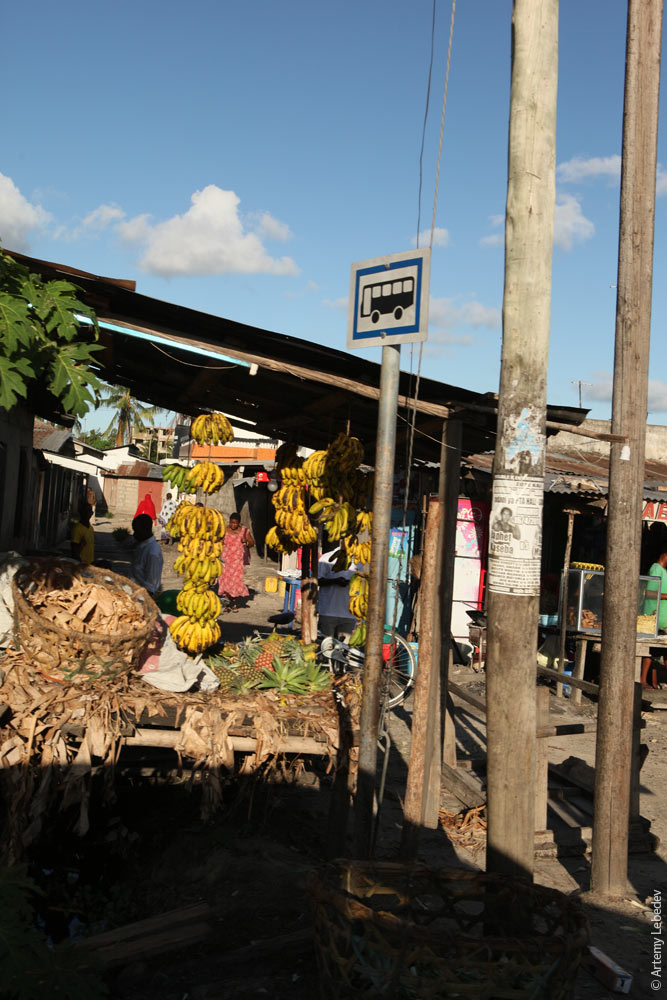 The bus stops. 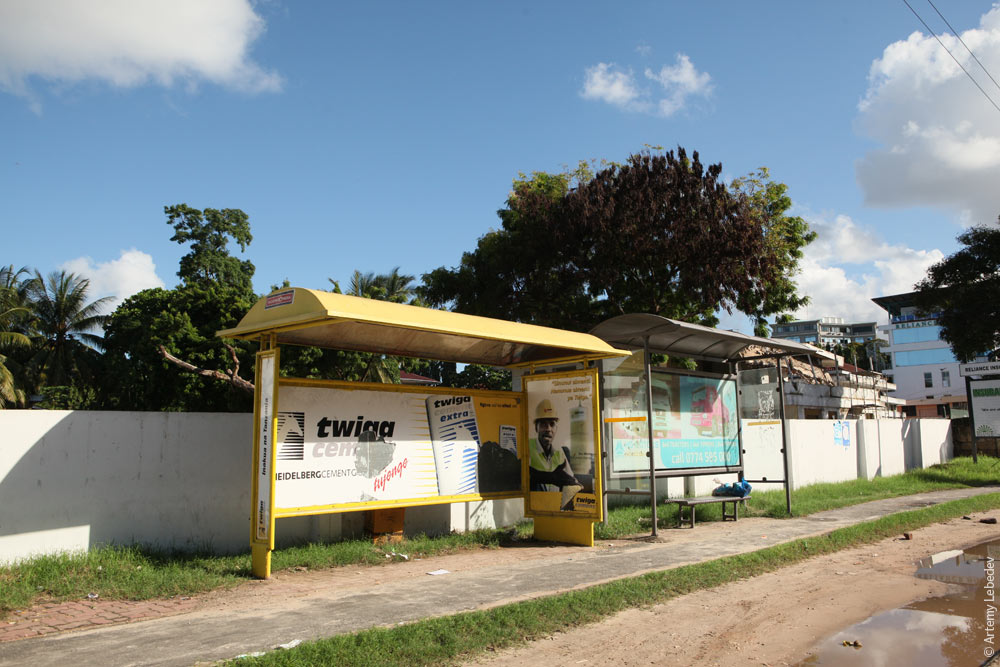 All the city buses bear the city bus logo—a finely detailed stencil that resembles the Сoca-Cola logo. 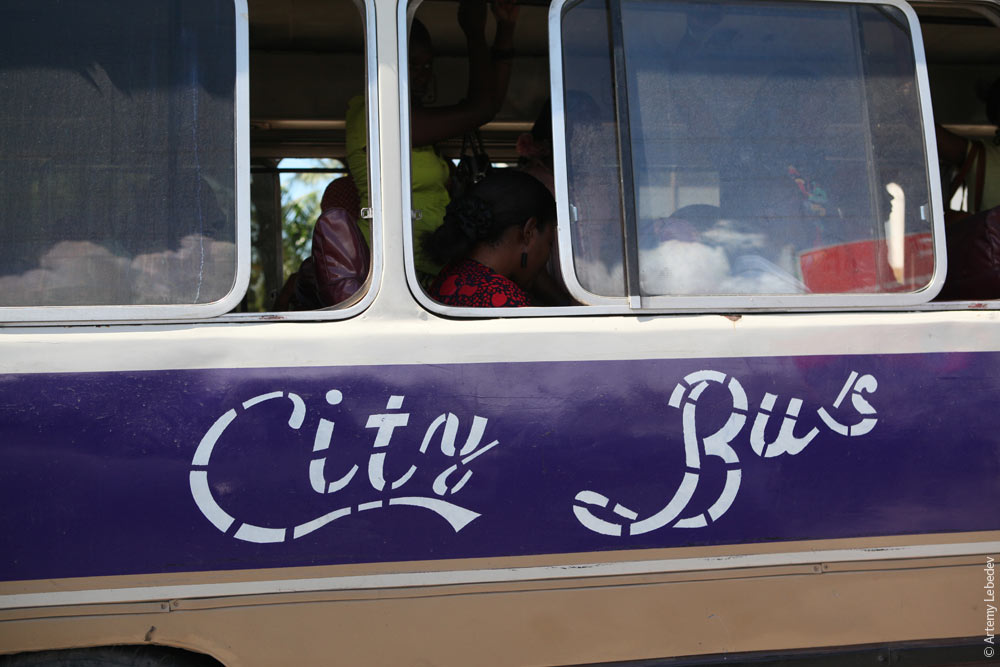 The taxi markings are curious. The stripe running down the entire length of the car with a circle in the center resembles a subway line, although there are no subways to be found within a thousand kilometer radius. 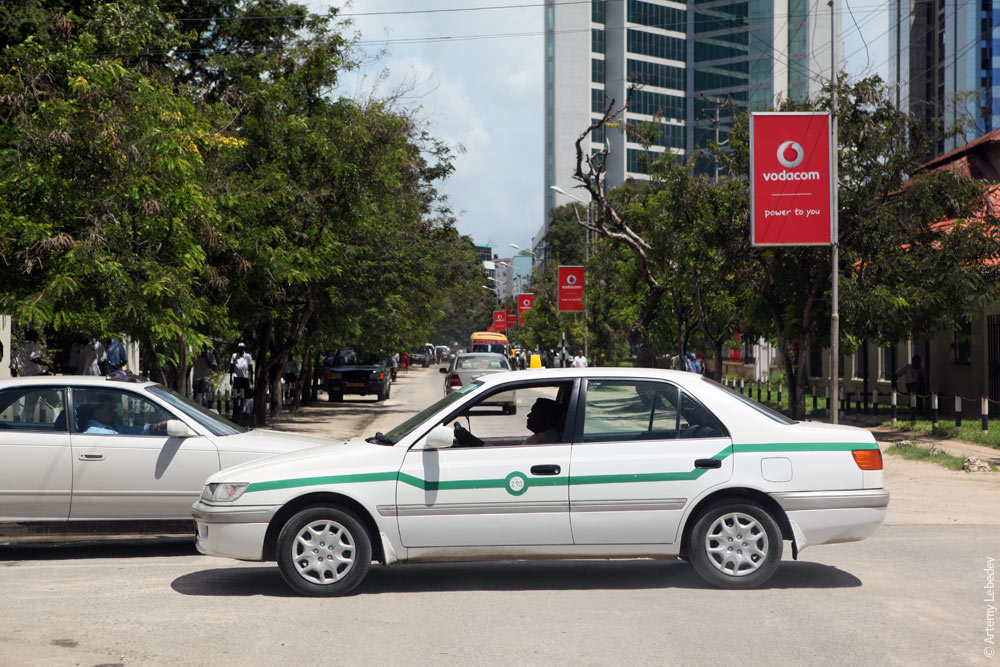 “Simama” means “stop” in Swahili. The country’s second language is English. 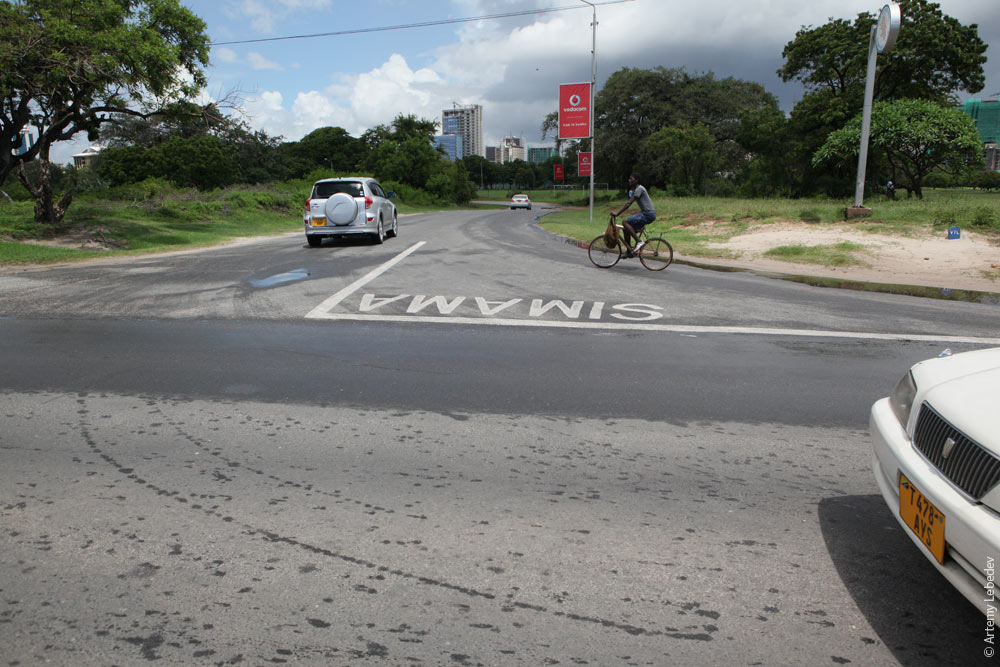 Car windows are plastered with stickers: these are vehicle inspection and insurance certificates. 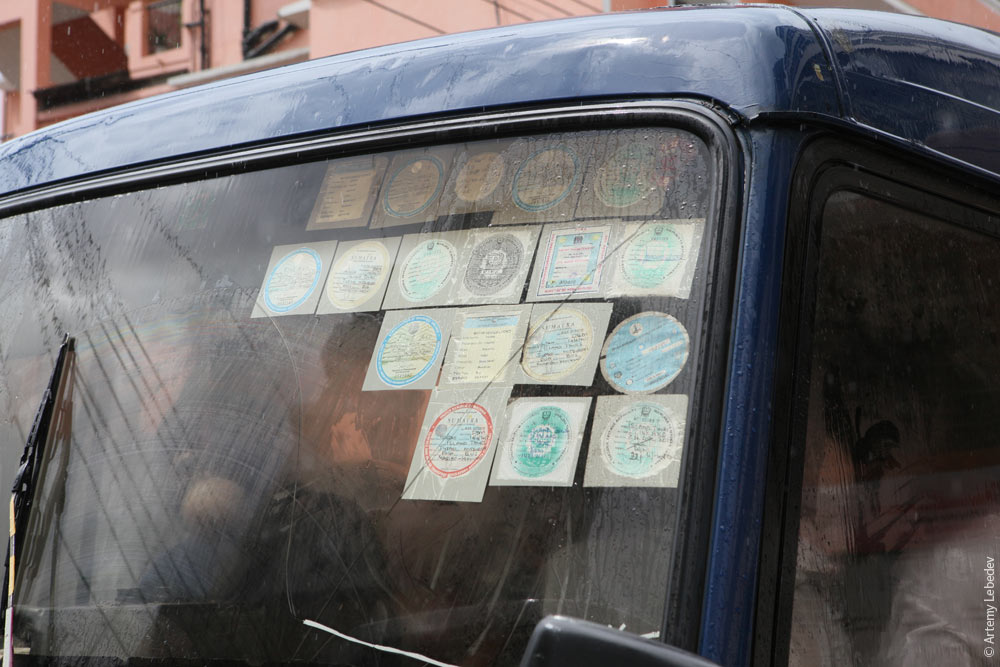 A license plate. 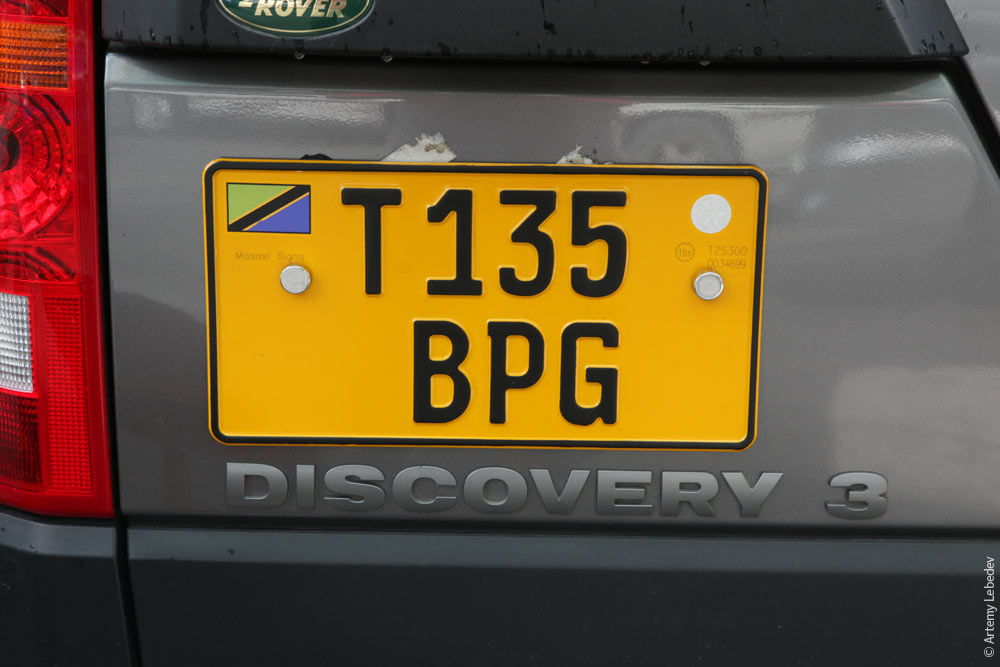 The pedestrian’s hands are peculiar—usually, monkeys are portrayed in this manner. 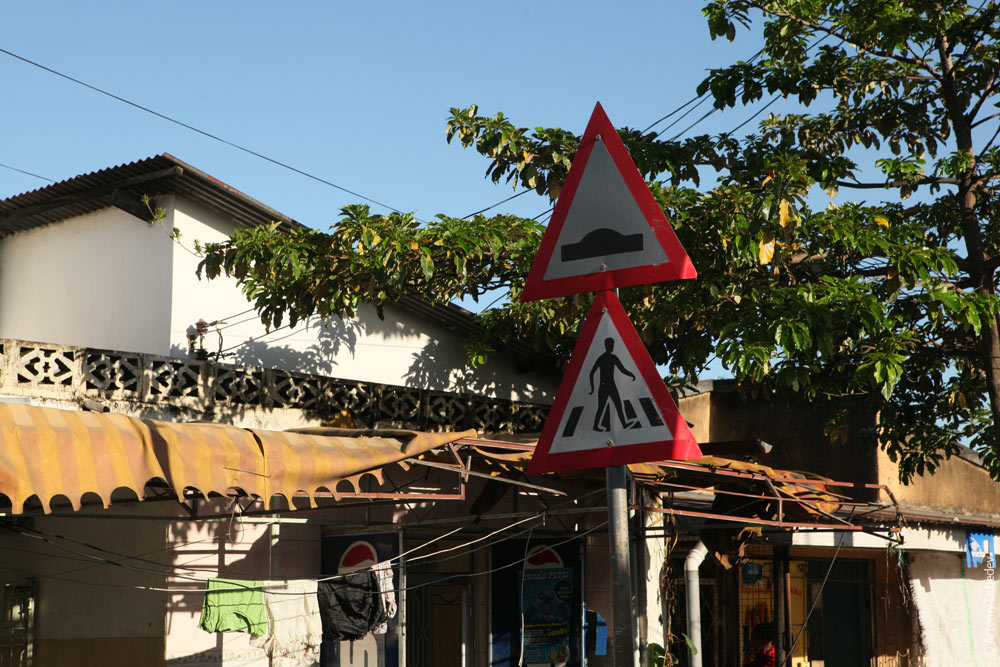 Small items of all kinds are sold from pink carts with green doors. Newspapers, phone cards and the like are fastened to the doors with bungee cords. 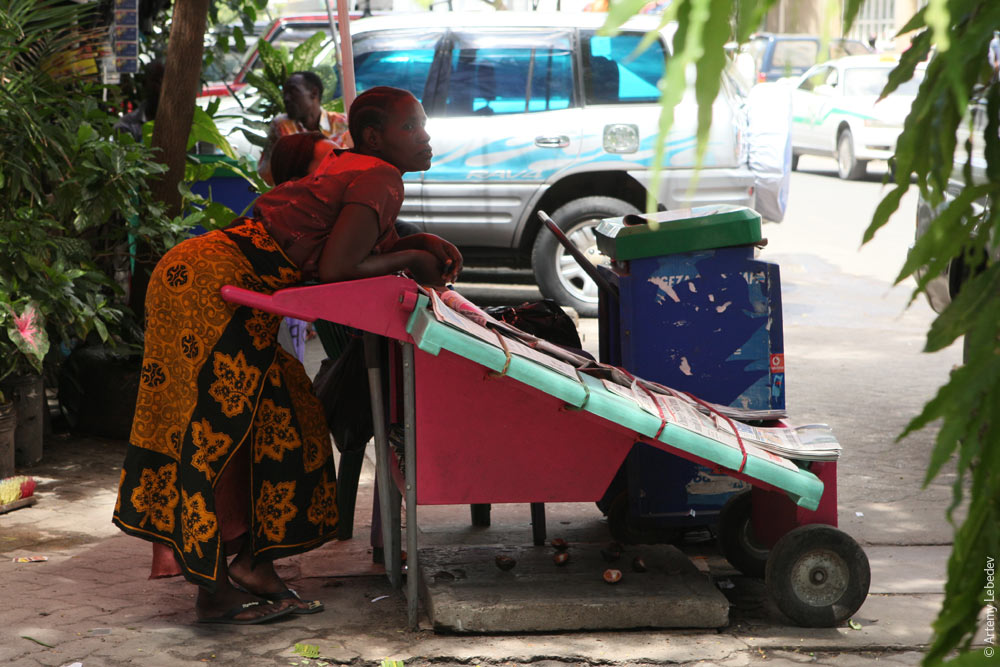 Every construction site has a board with the names and contact information of the engineers and contractors out front. Every line is written on its own separate plank (like in Madagascar and other countries formerly in the French sphere of influence). 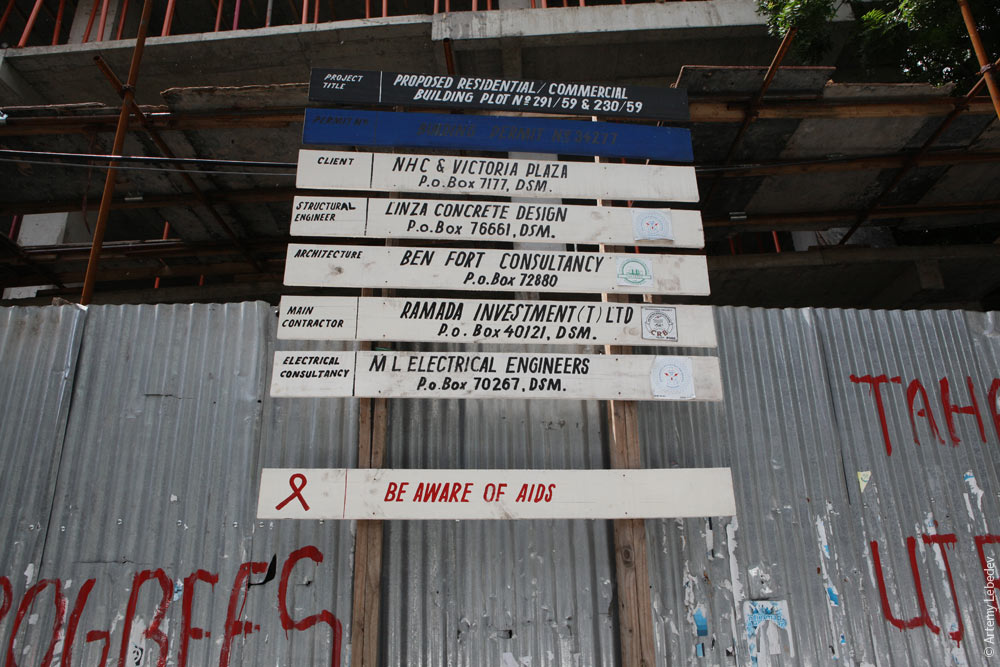 Incidentally, all the construction site fences also consist of individual half-meter-wide sections of metal. Very similar to Guinea, only without the neat colored stripe along the entire length of the fence. 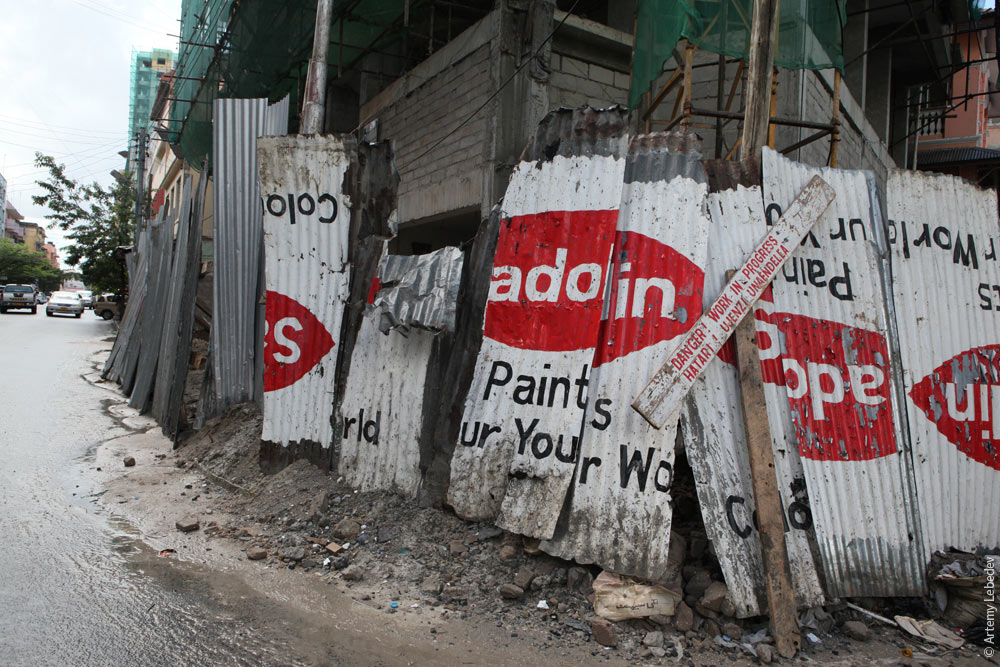 Buildings under construction have a safety guard around the perimeter to catch falling debris (situated much higher up than in Rome or Montevideo). 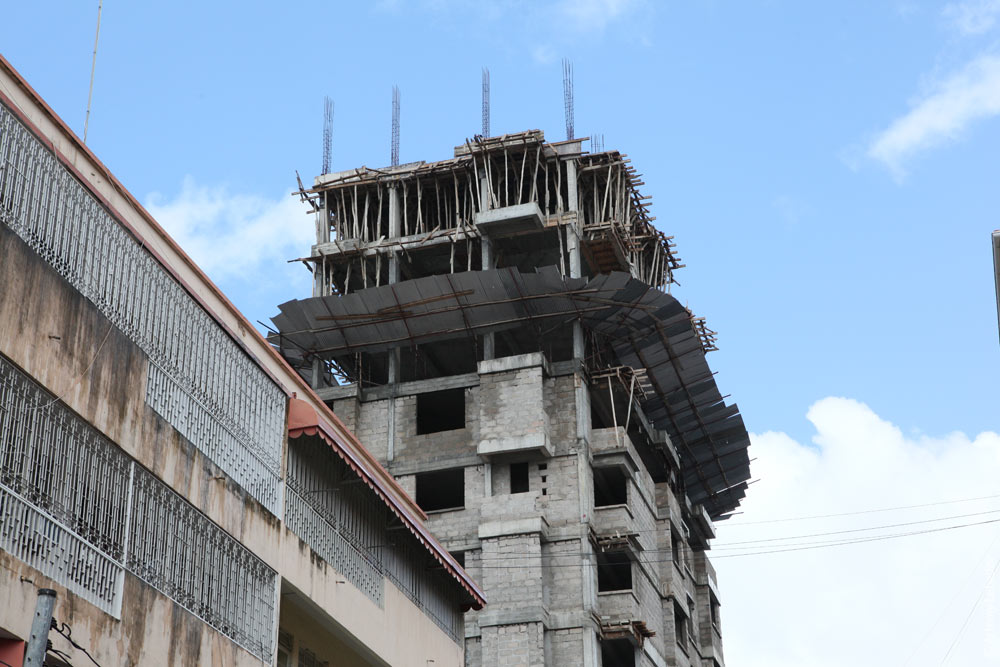 All the balconies and windows are covered with grilles (like in Taiwan). Apartments get broken into and cleaned out regardless of what floor they’re on. 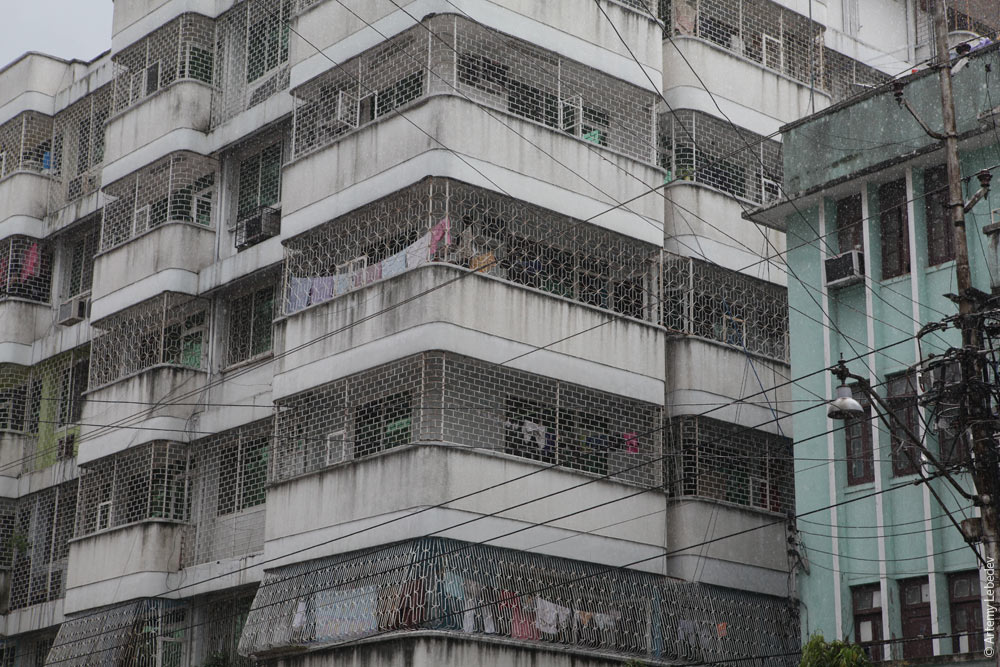 Addresses, plot numbers and other useful bits of public information are painted right on the wall. 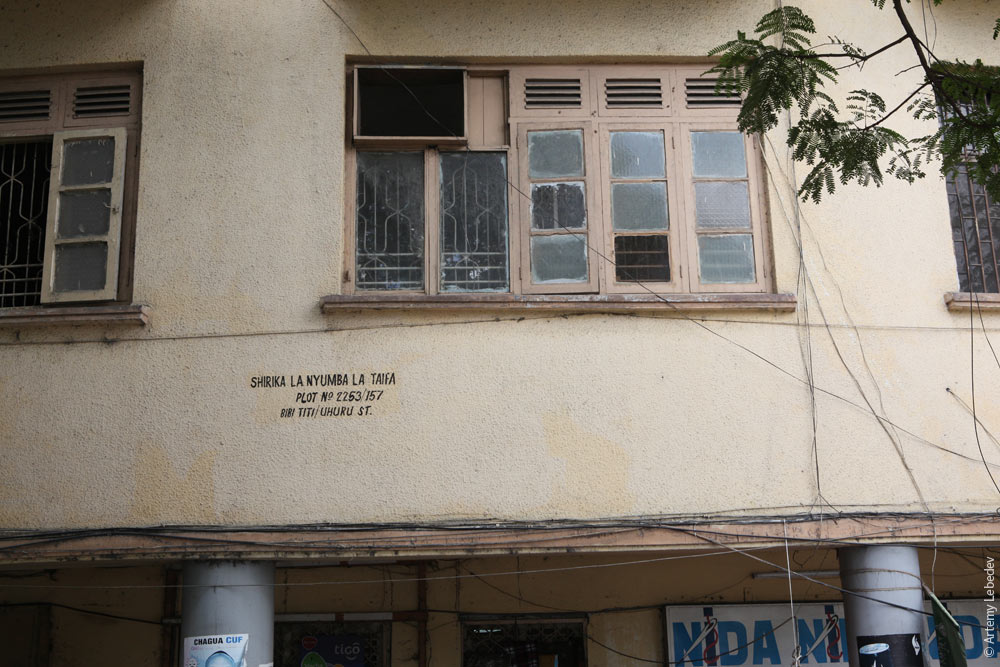 Perpendicular concrete slabs, which could be mistaken for balconies without railings, grow out of the building walls. These are actually shade awnings. 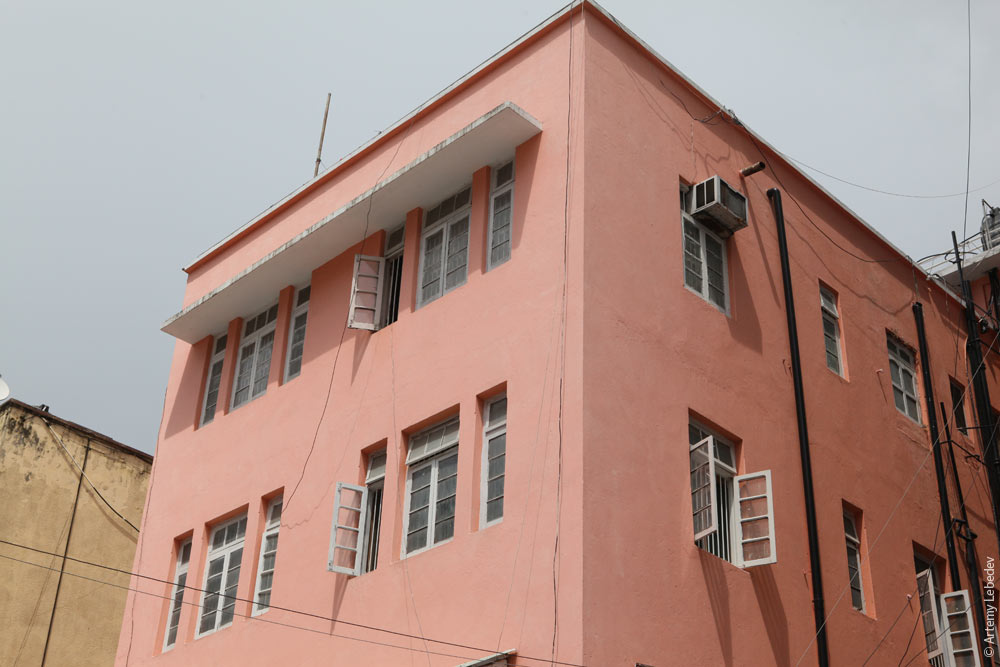 Electrification. 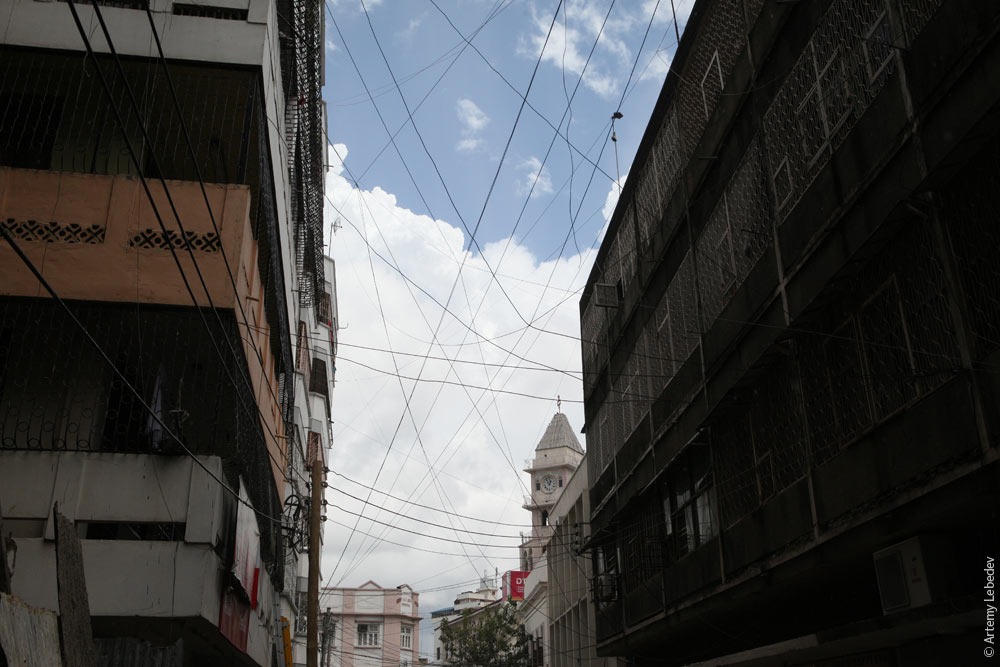 Half the buildings in the old part of the city have the year in which they were built laid out on the facade. 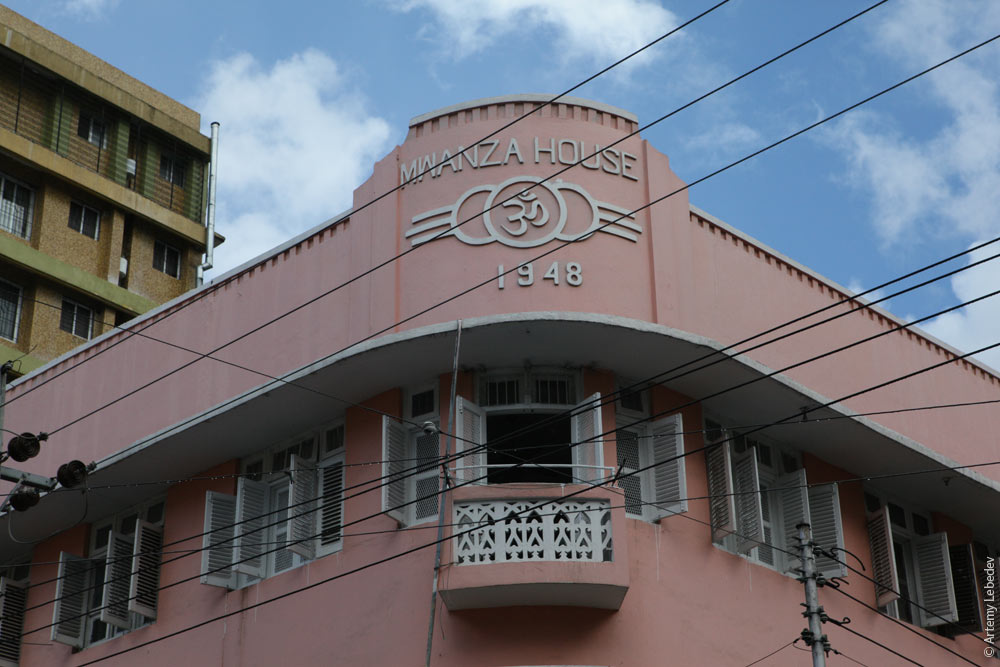 A Dar es Salaam trash can. 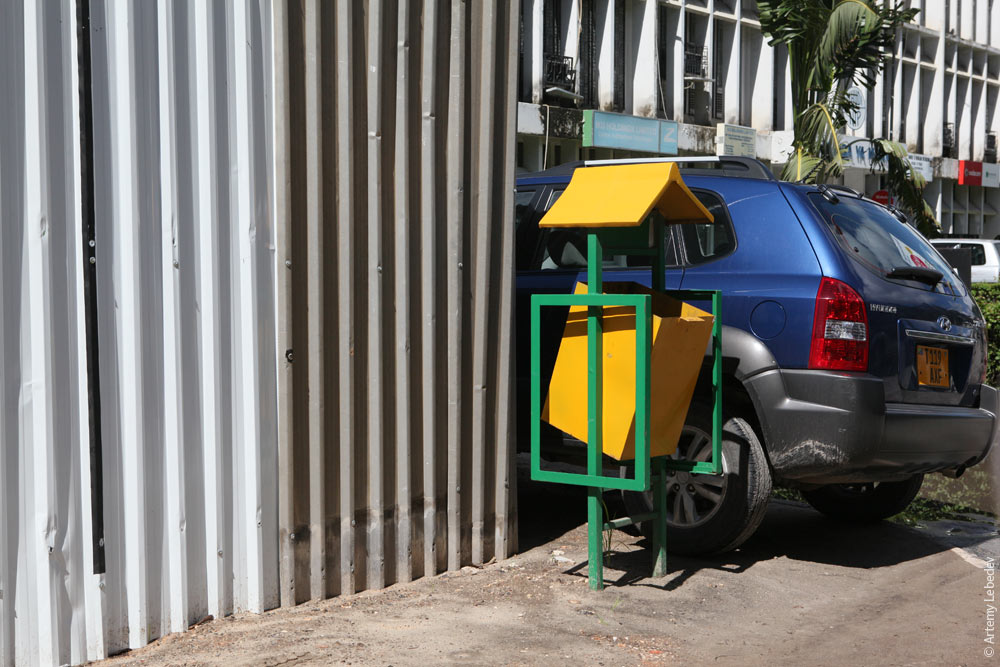 After a rainfall, half the streets are flooded. You can get to the police station only in fishing waders. 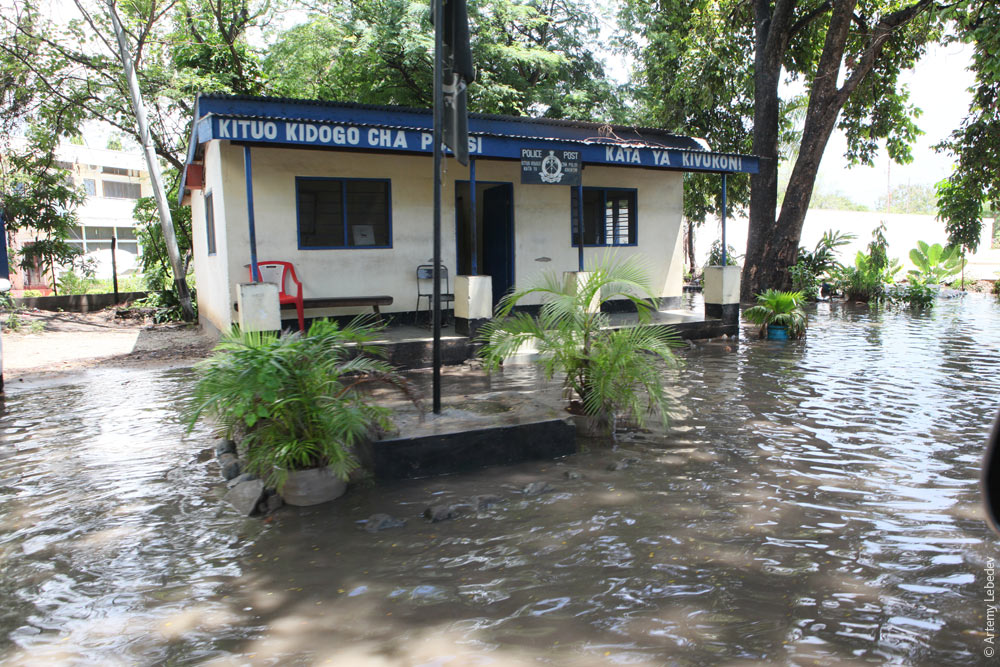 Although none of the fishermen here actually wear waders. 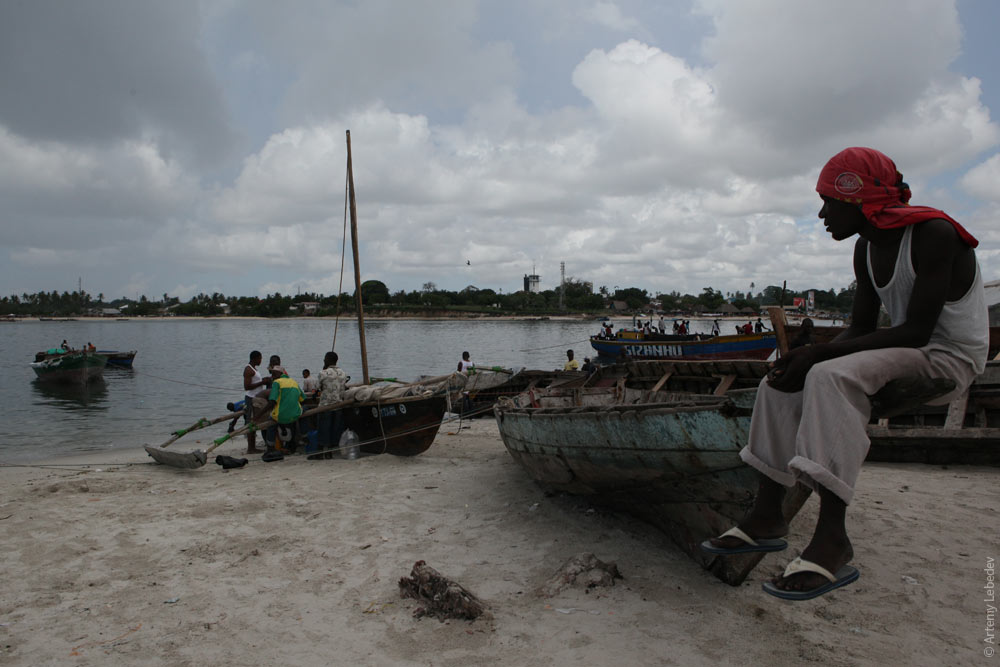 A payphone. 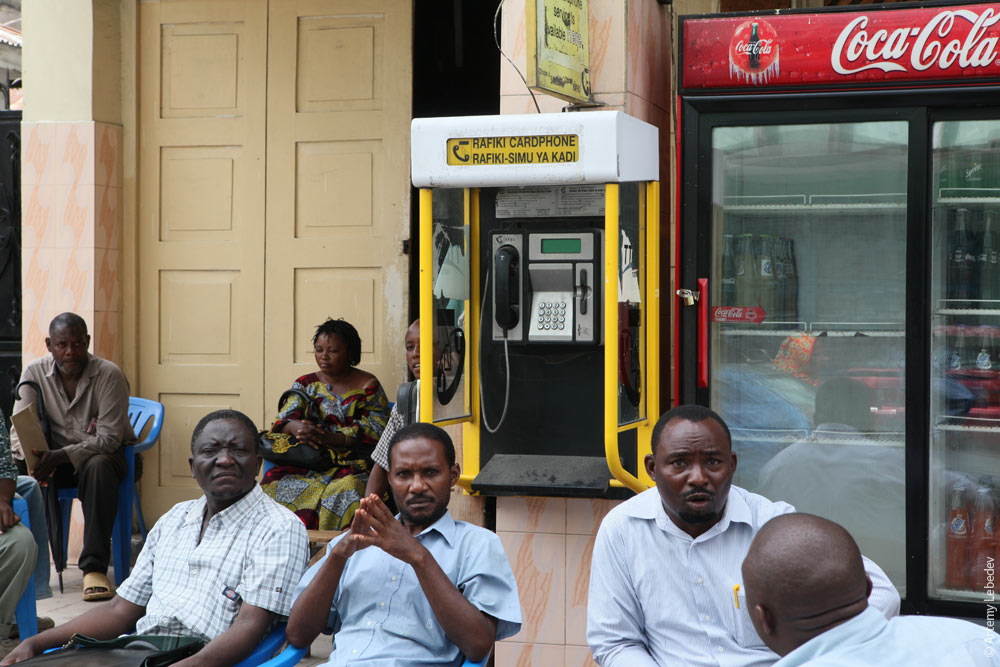 Judging by the illustration on this cellular company’s billboard, chickens on public transport are a normal everyday occurrence. 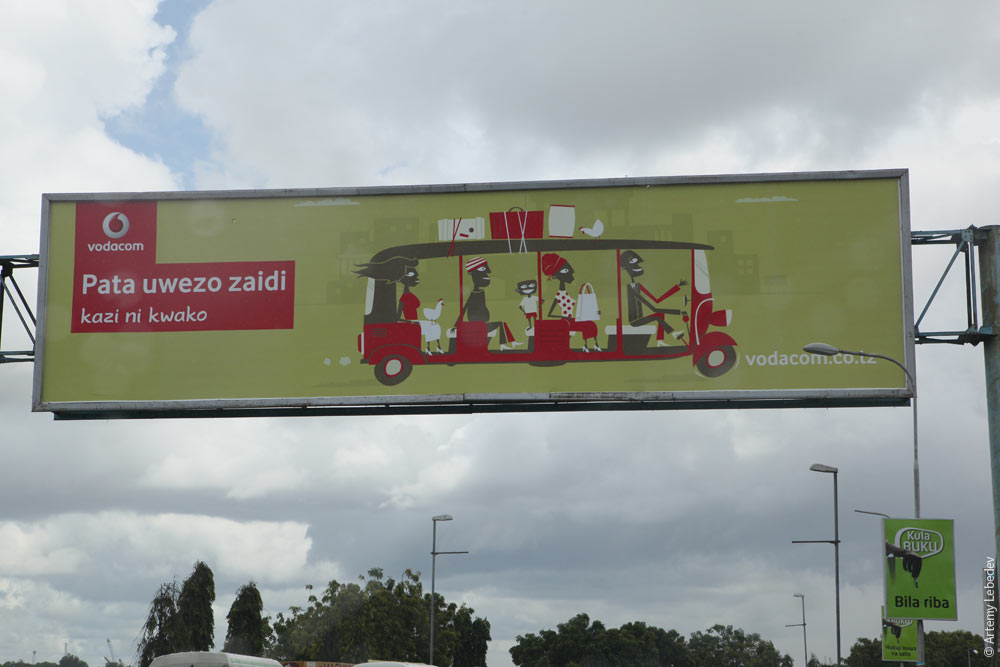 Storm drain grate got stolen and now there’s hole in the pavement? Just stuff it with an old tire. 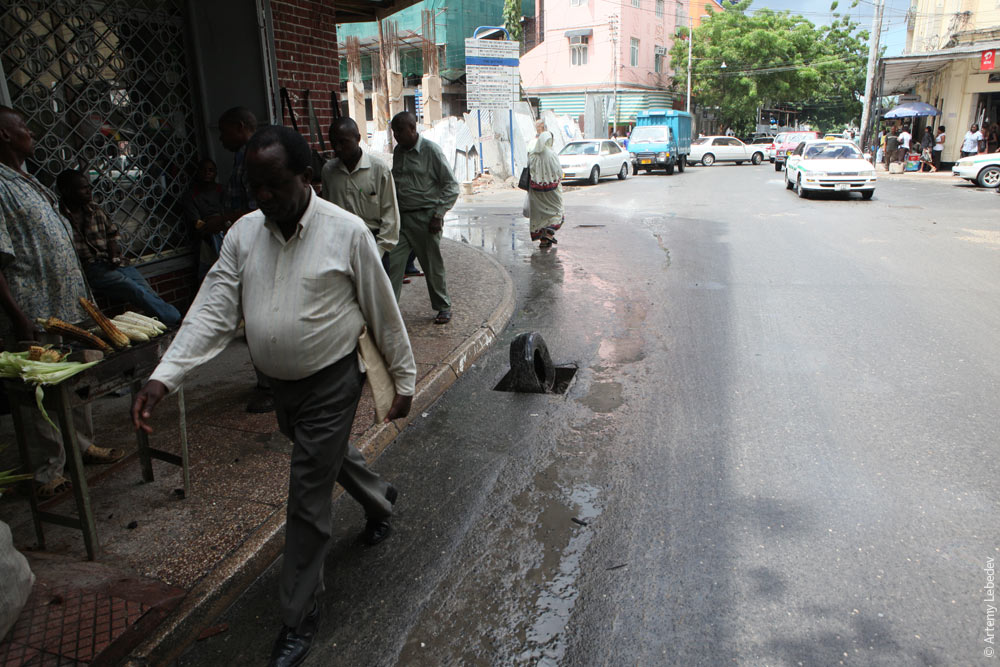 Cable connectors. Rainwater can’t collect here. 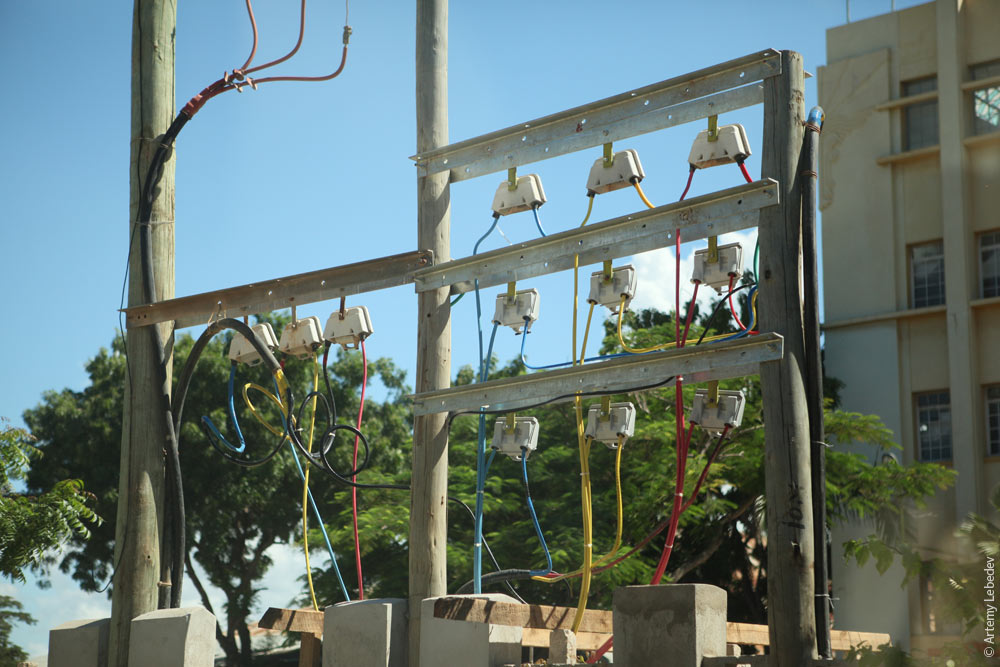 The same rationale is behind the hoods over the locks—they prevent the locks from rusting over the rainy season.  There were post boxes here once. 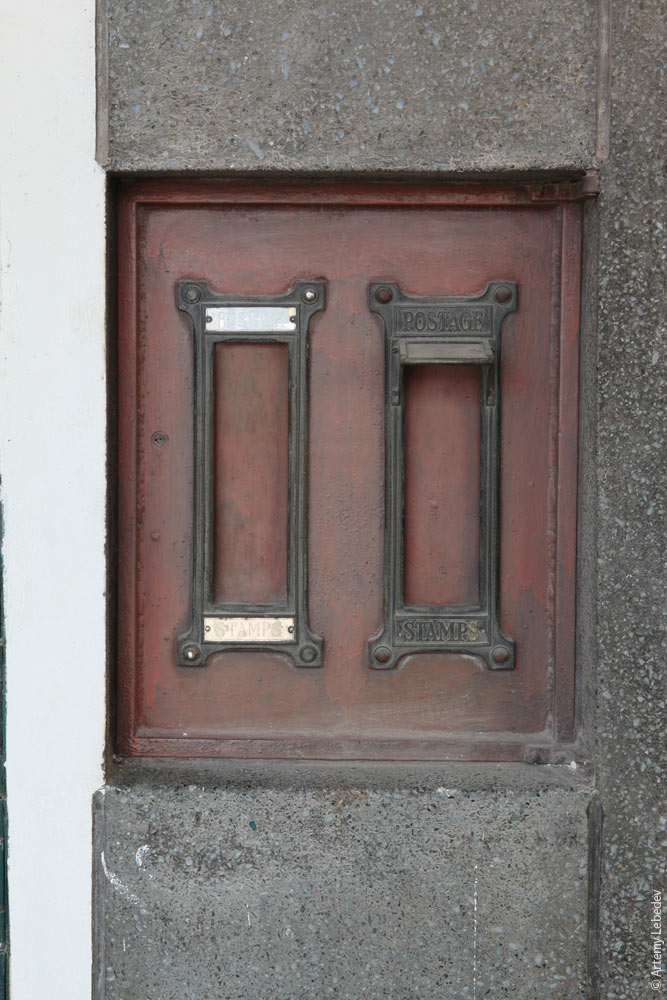 What remains today is a system of PO boxes at the post offices themselves (like in Mongolia, for example). 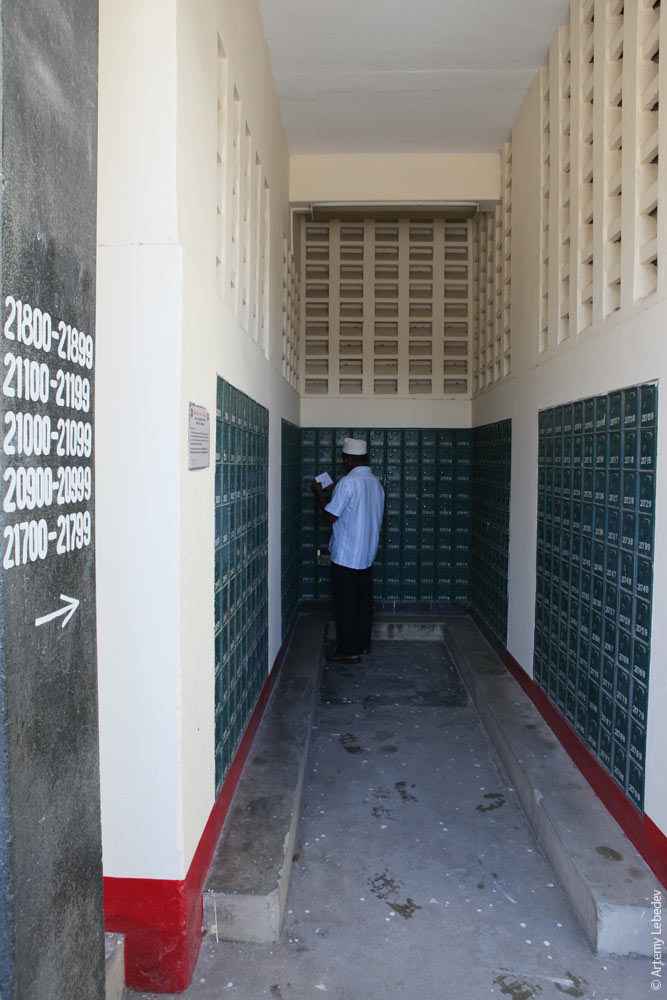 There’s a custom of putting car tires onto trees here. The tree grows while the tire stays in place.  Public service murals urge the public to remain faithful, use condoms and lead a healthy lifestyle. 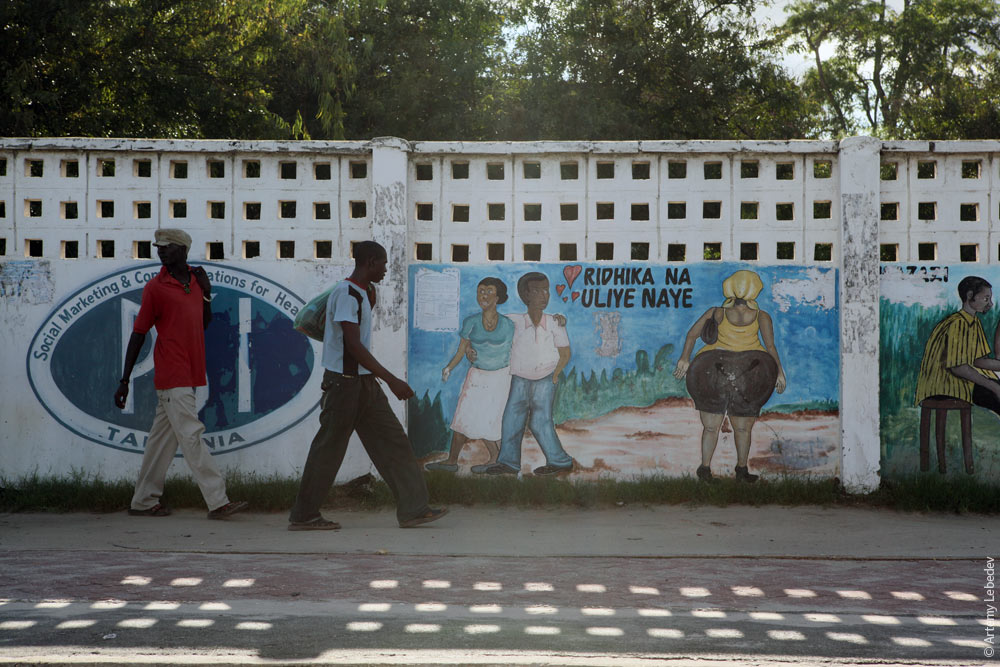 At some point I started making a habit of checking out the supermarkets in every country. You can almost always come across something interesting and unexpected here. In Tanzania, it’s the bags of chips—they’re all incredibly crumpled and wrinkled. 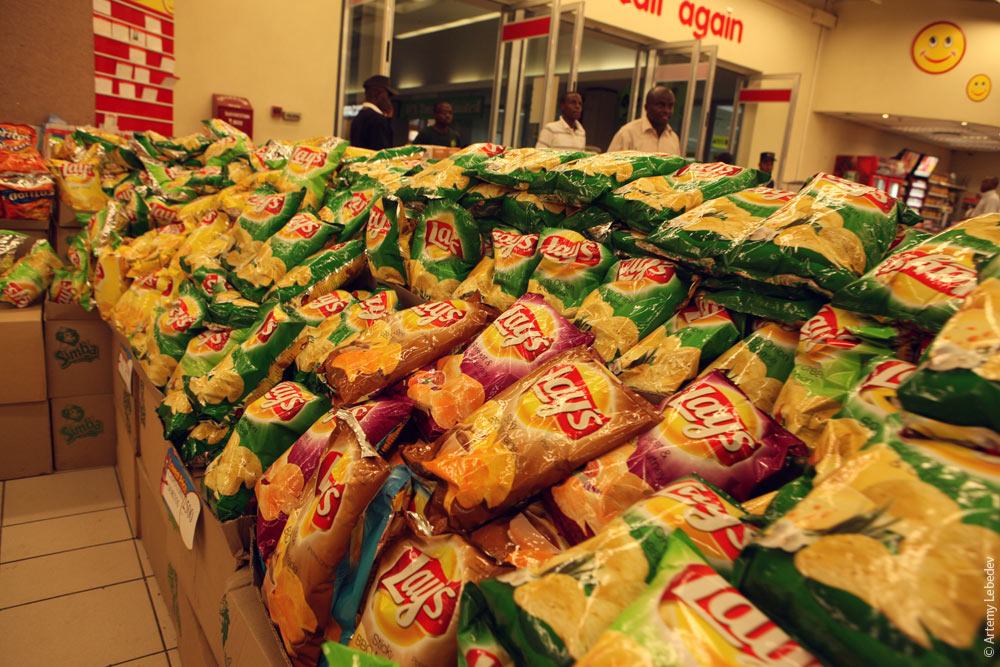 Security guards monitor the exits at every supermarket, checking the contents of shopping bags and stamping receipts—so that the receipt can’t be used to carry out the same items a second time. 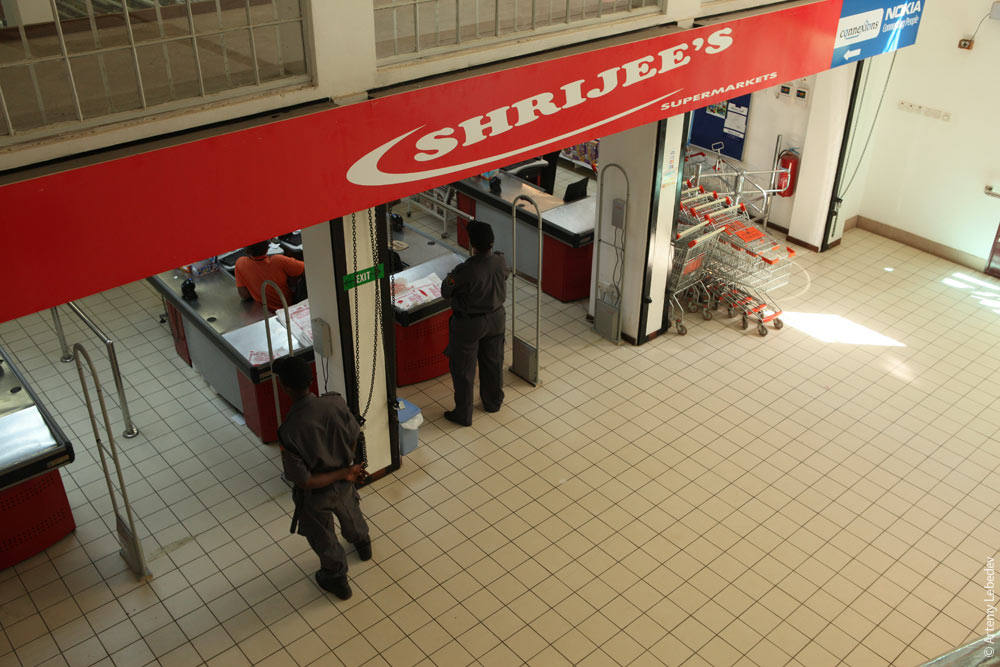 If you don’t like this system, you’re welcome to shop at the market—here, pineapples are sold straight out of the mud. 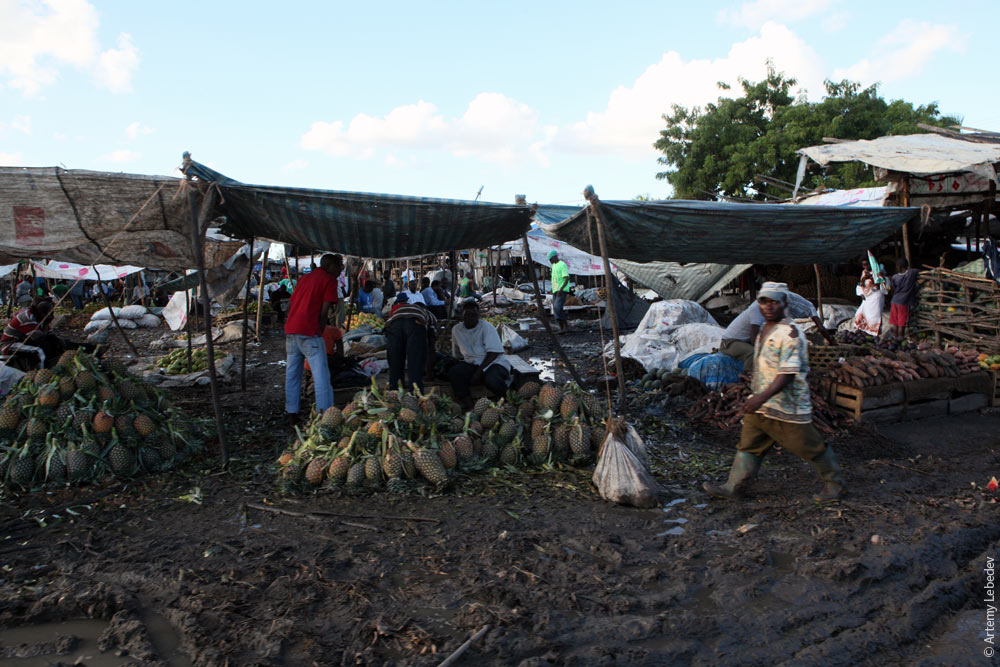 The mud is very beautiful here. A car drove by and splattered ours with muck from a puddle—et voilà, a ready-made painting. 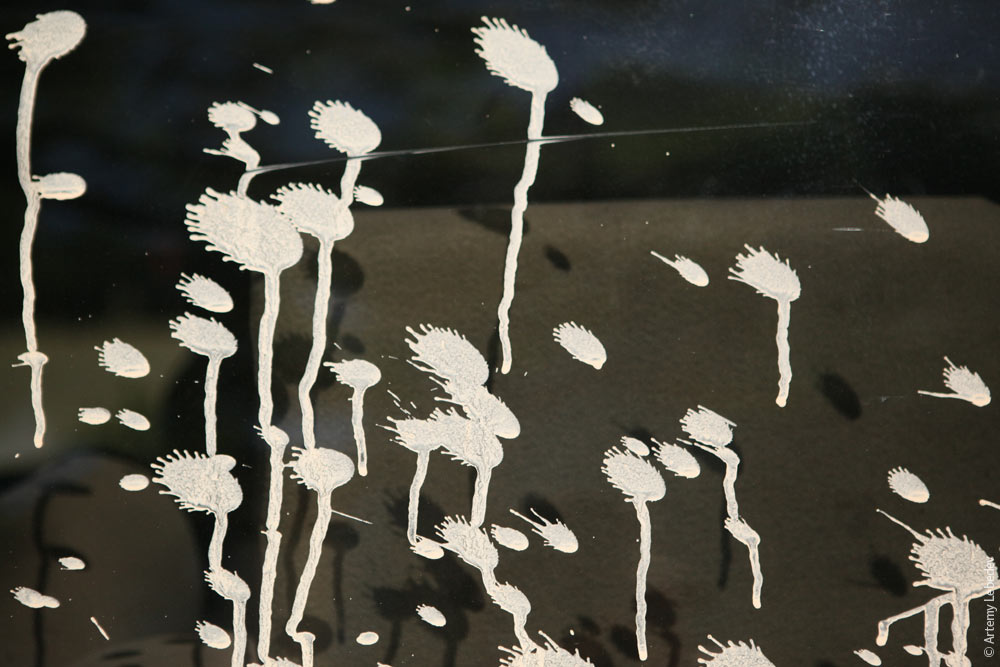 A traffic light. 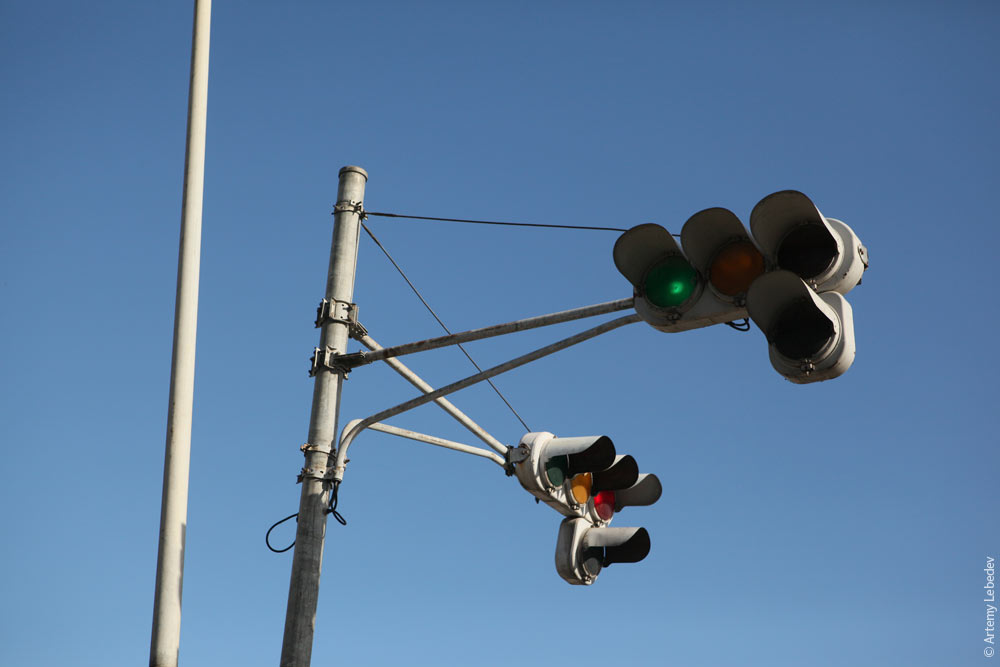 Trident Ltd. uses the Ukrainian coat of arms as its logo. That’s what must have come up when they did an image search on the Internet. 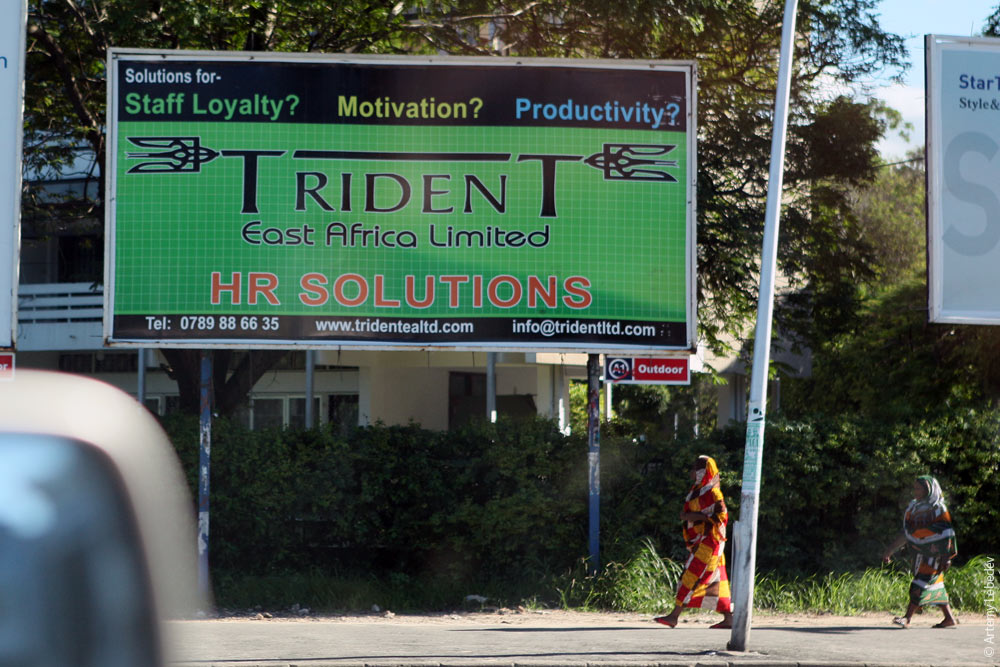 ZanzibarMapZanzibar is an island in the Indian Ocean, half an hour away from Dar es Salaam by plane. The capital (Zanzibar City) is known for its historical part—Stone Town. 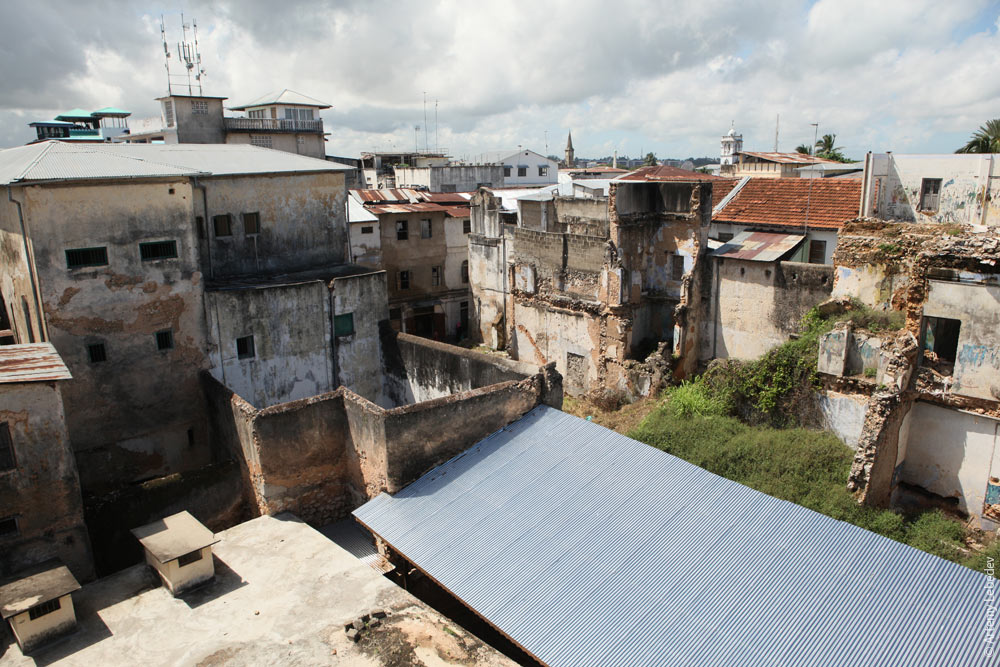 Both the Portuguese and the Turks have left their mark here. 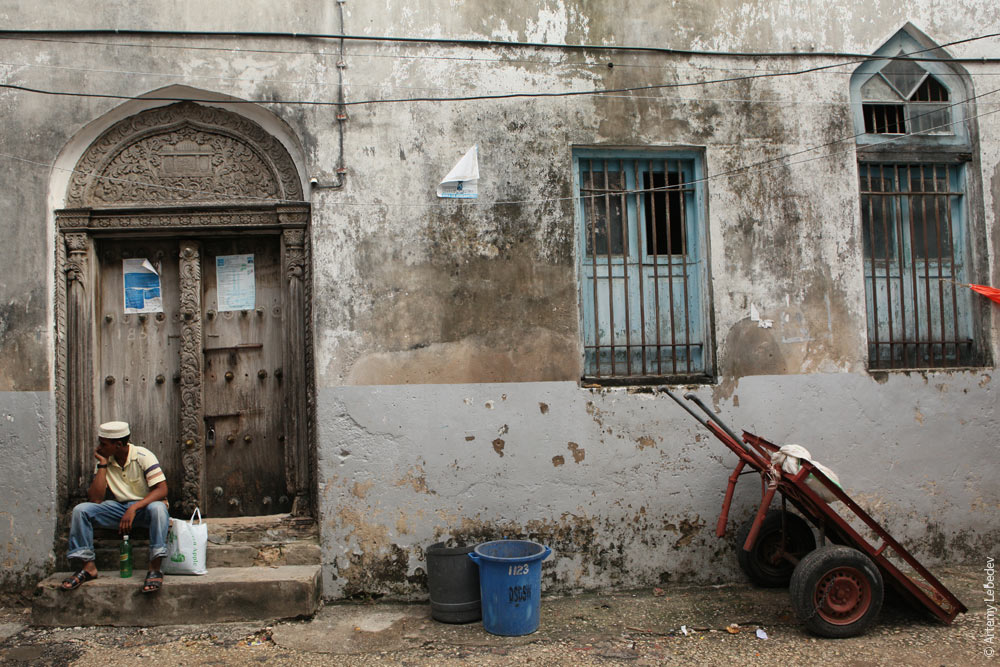 The slave trade used to be very active here. A monument to the slaves: 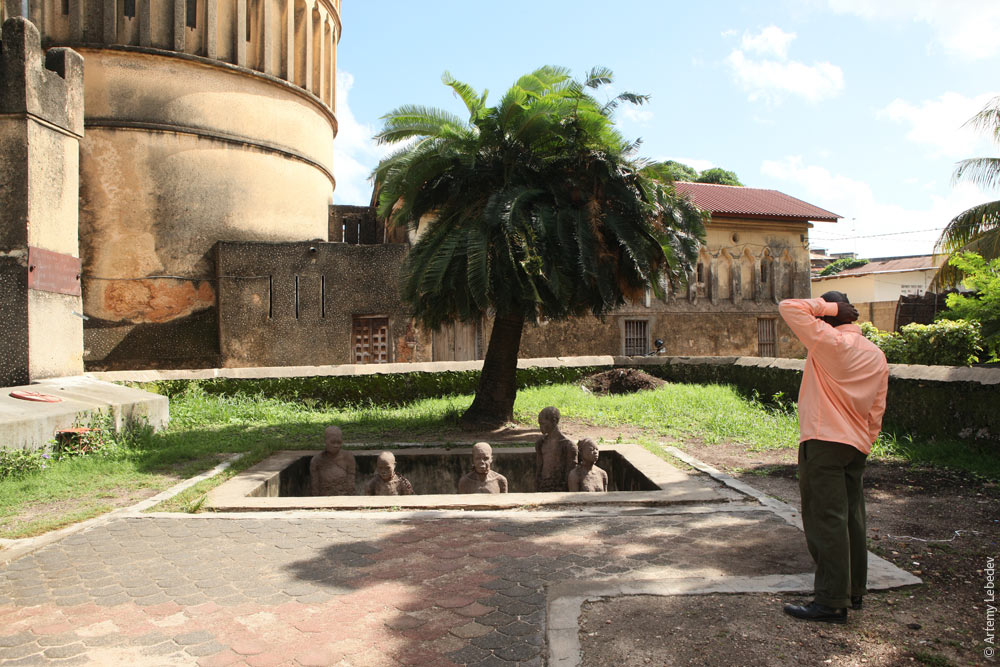 Nowadays, fish are auctioned off instead. 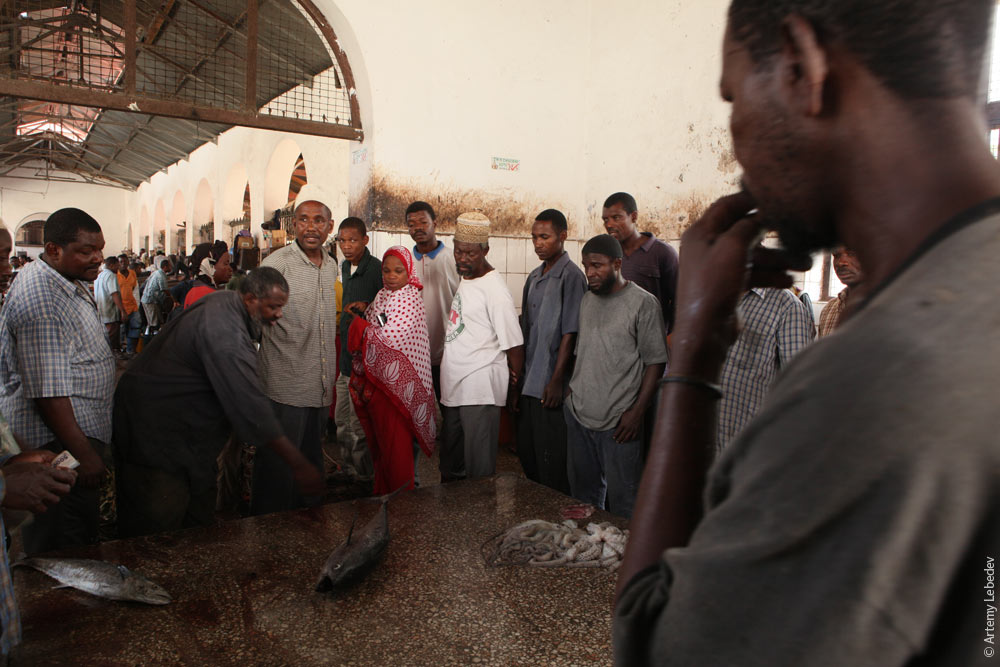 And butchered chickens. The cats watch attentively. 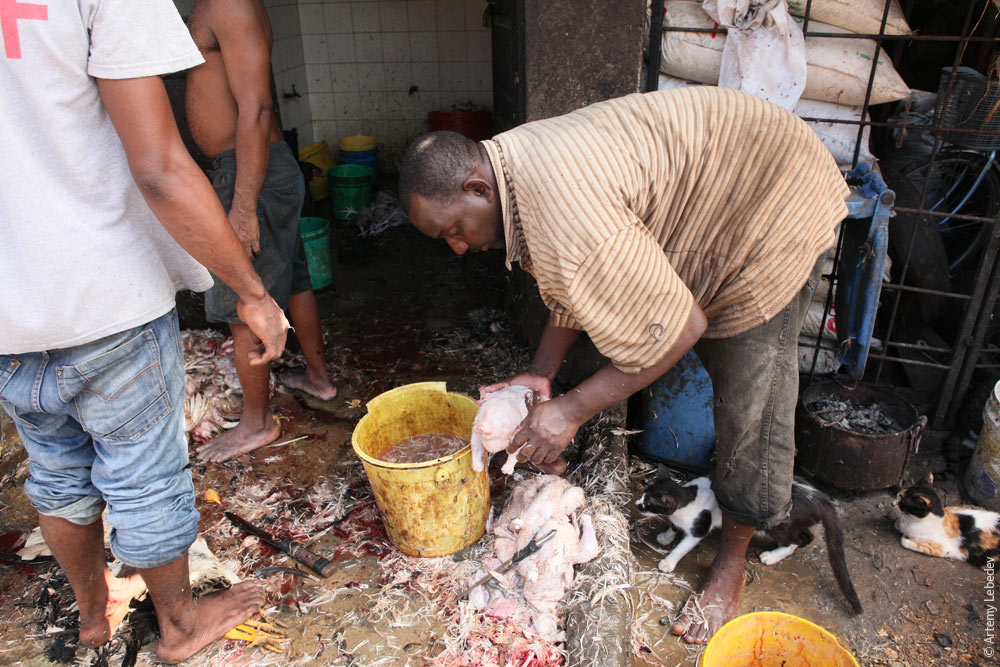 Human anatomy. 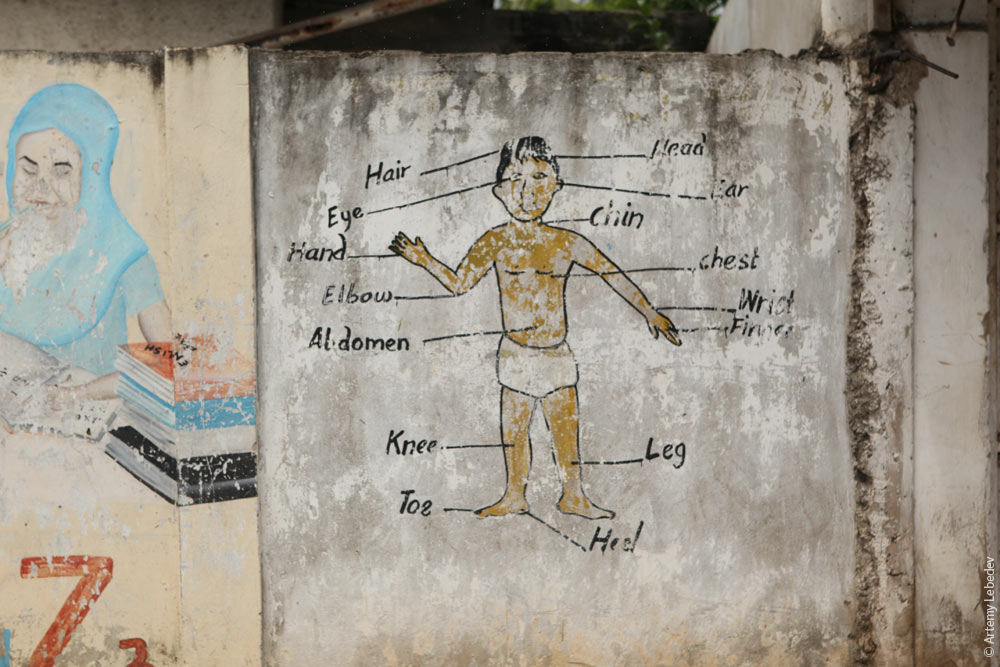 A pedestrian crossing. 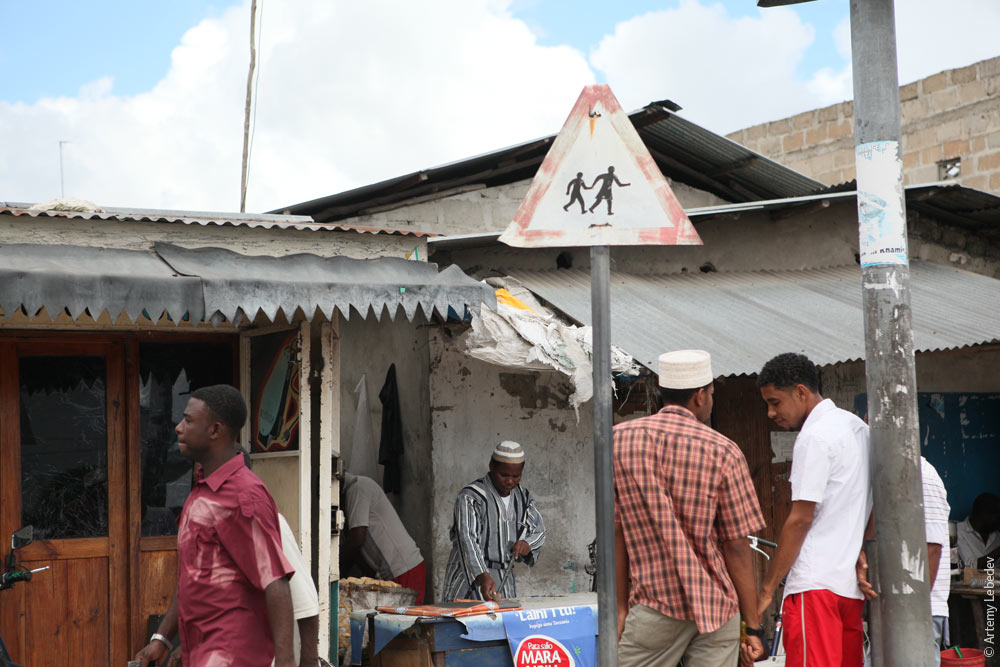 Payphones. 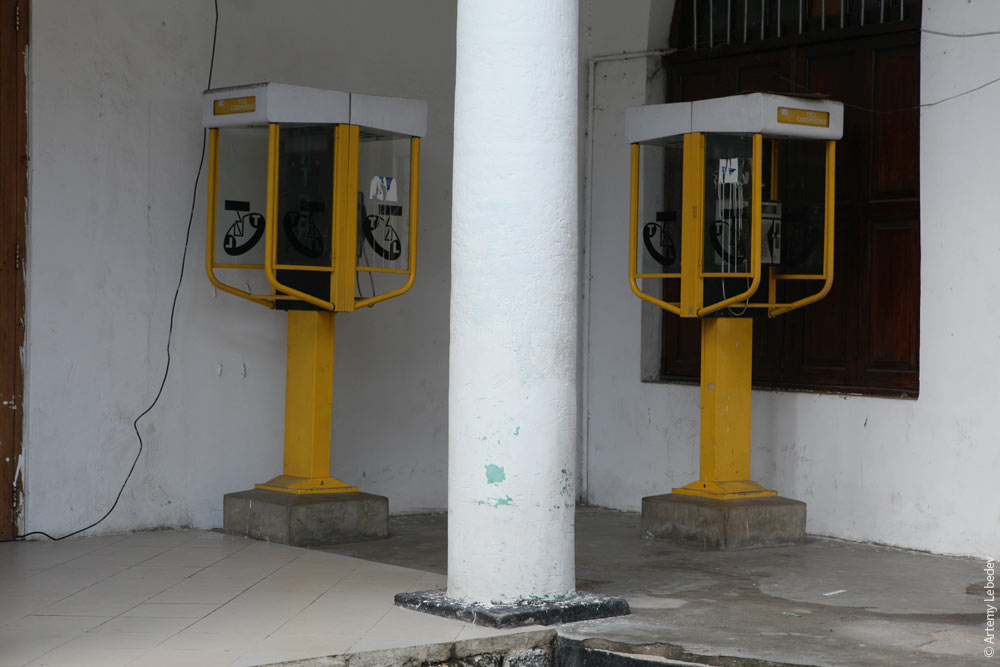 People get their water from spigots in the street, using empty sunflower oil canisters to transport it (like in Sierra Leone, which is on the opposite side of Africa). 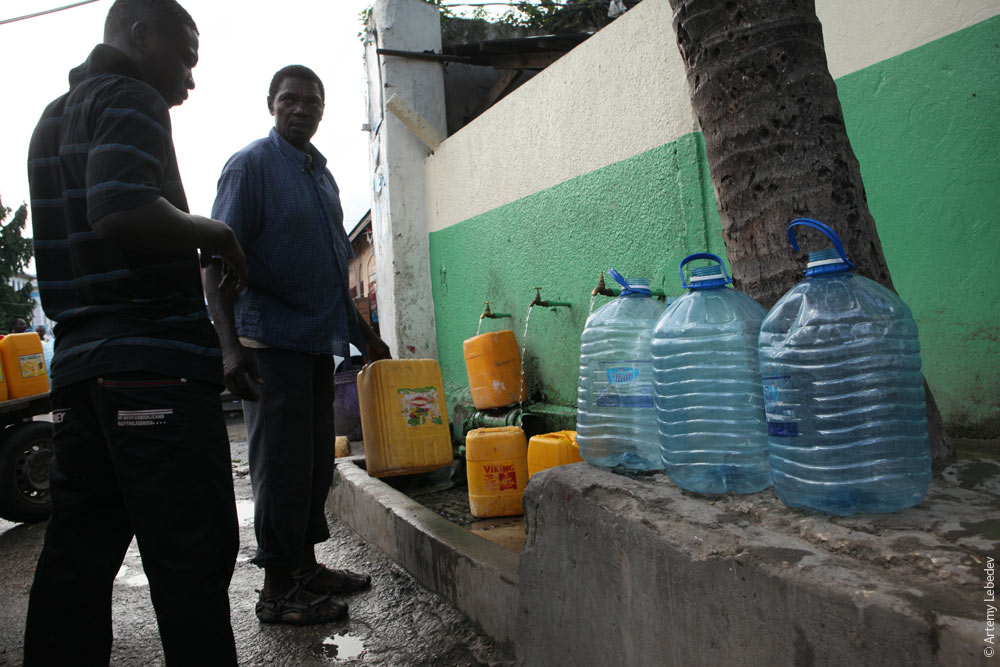 Several functioning post boxes still exist on Zanzibar. 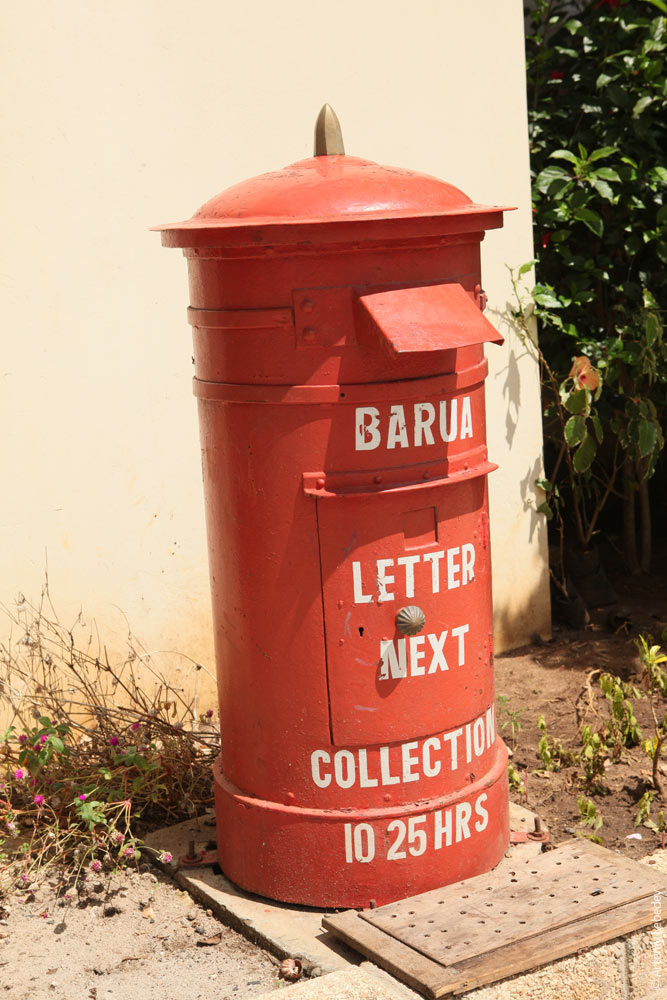 Fire extinguishers are blue here. 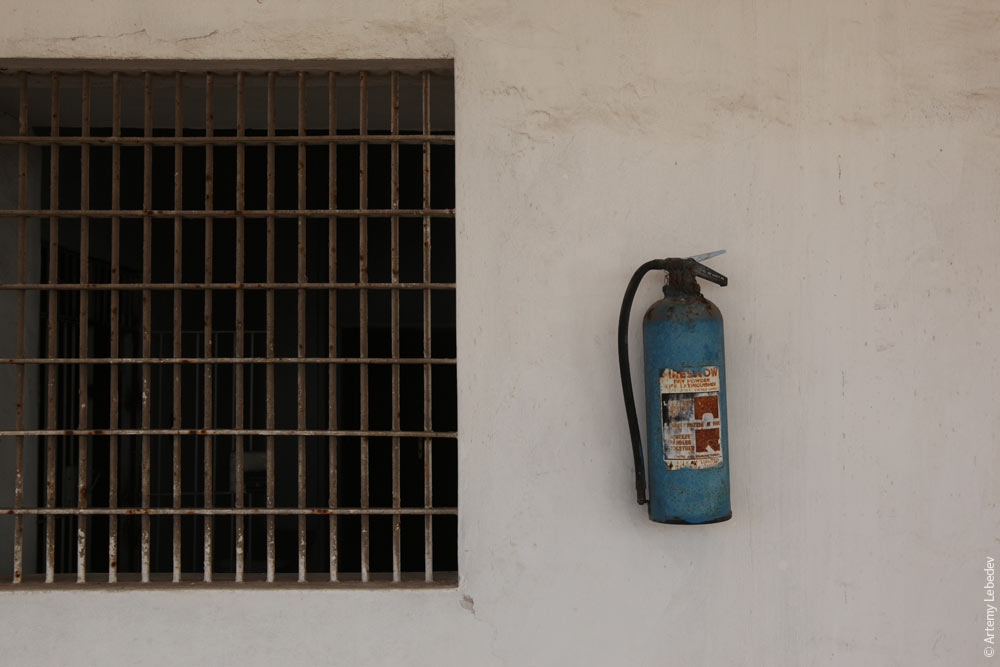 The “licensed to carry X passengers” stickers on taxi doors are always arranged in a trademark Zanzibar fashion. 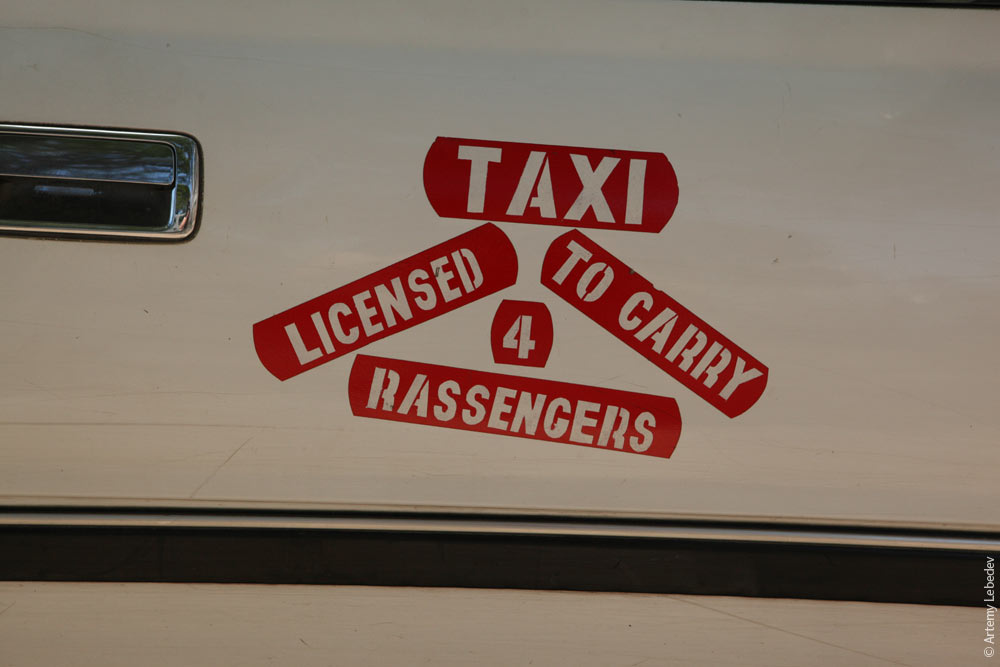 A traffic light. 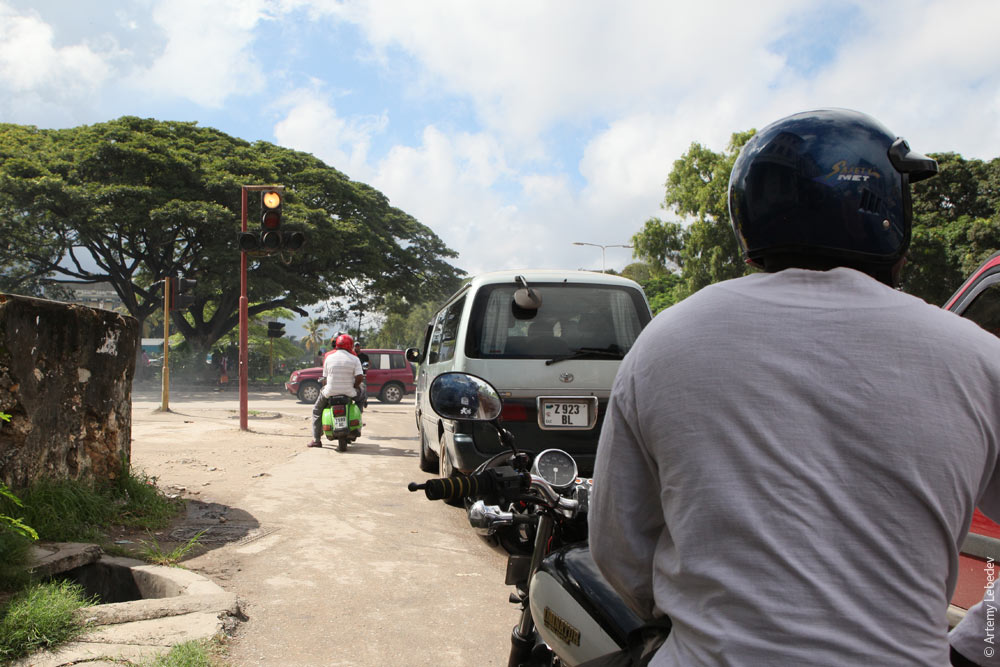 A road.  City life. Everything’s just like at home.  I think comparisons between Russia and Africa are drawn with unjust infrequency. |